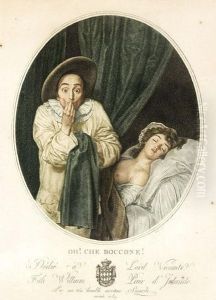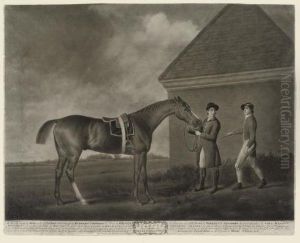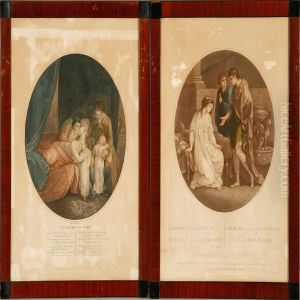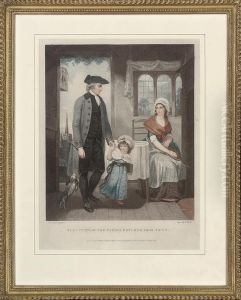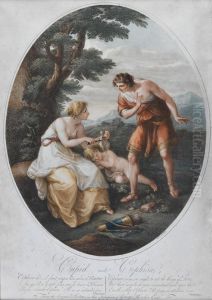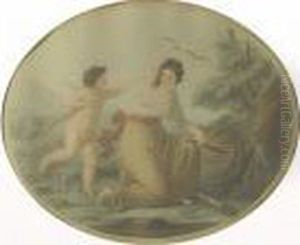Thomas Burke Paintings
Thomas Burke was an English engraver, born in 1749. While there have been multiple individuals with the name Thomas Burke throughout history, including writers and politicians, this Thomas Burke is known for his work in the art world, particularly during the 18th century. Burke's engravings were highly regarded for their quality and detail, and he is noted for contributing to the world of printmaking, a vital aspect of art circulation before the advent of modern reproduction technologies.
Burke received his artistic training under the notable English engraver and publisher, William Wynne Ryland. Under Ryland's mentorship, Burke honed his skills in the intricate art of engraving. He developed a style that was characterized by its delicate lines and attention to detail, which allowed him to excel in reproducing the works of other artists in print form. This was a common practice at the time, as engraving was a primary method for artists to disseminate their works to a broader audience.
Throughout his career, Thomas Burke achieved recognition for his engravings after well-known painters. He engraved works after artists such as Angelica Kauffman, who was a prominent Swiss Neoclassical painter. His reproductions helped to popularize the works of the painters he engraved and played a role in the broader European art scene. Burke's engravings were collected and admired by art connoisseurs of the period, and they contributed to the visual culture of the time, influencing tastes and trends.
Unfortunately, like many artists of his time, Burke did not achieve immense fame or wealth during his lifetime. However, his contributions to the art world were significant in terms of technique and dissemination of artistic works. Thomas Burke passed away in 1815, leaving behind a legacy as a skilled craftsman in the world of engraving. His works continue to be of interest to collectors and historians, providing insight into the art and culture of the Georgian era.
